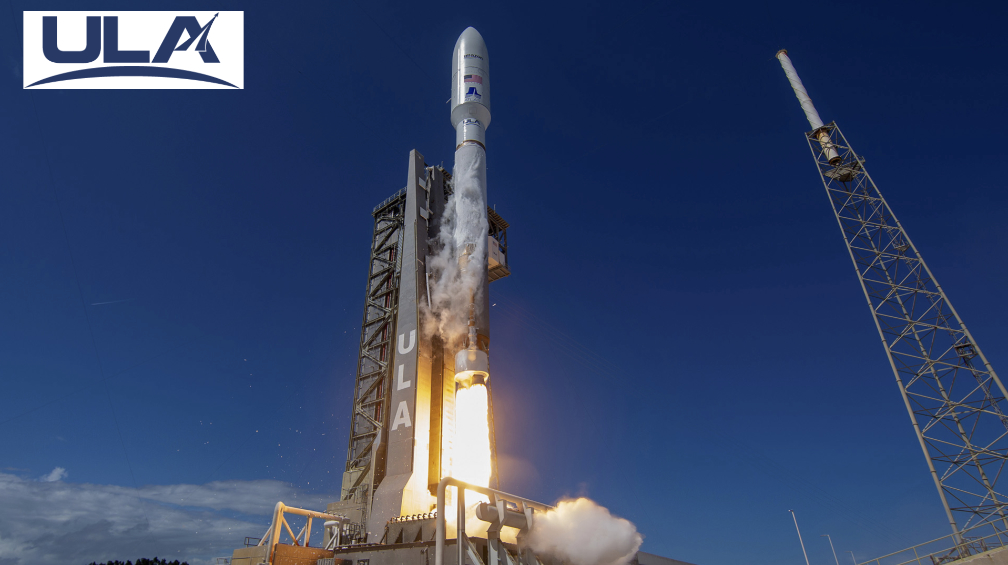
Space Systems Command (SSC) has assigned 21 new launch service mission assignments for the FY24 National Security Space Launch (NSSL) Phase 2 Launch Service Procurement contract following completion of the NSSL Mission Assignment Board (MAB)’s assignment process for FY24 launch service awards — this is the fifth, and last, order year in the Phase 2 contract.

United Launch Alliance (ULA) received 11 mission assignments and Space Exploration Technologies Corp. (SpaceX) received 10. These Order Year 5 (OY5) missions are scheduled to launch over the next two to three years and focus on a variety of mission areas.

The 11 missions assigned to ULA include… GPS III-9, NROL-73, NROL-56, STP-5, SILENTBARKER 2/NROL-118, GPS IIIF-1, NROL-100, USSF-95, NROL-109, SDA T2TL-B, and USSF-25.

The 10 missions assigned to SpaceX include… SDA T1TL-F, SDA T1TR-A, USSF-57, NROL-77, SDA T1TR-E, GPS III-10, USSF-75, SDA T2TL-A, SDA T2TL-C, and USSF-70.
NROL-77, NROL-73, NROL-56, NROL-109, and NROL-100 are missions being conducted in partnership with the National Reconnaissance Office (NRO).

T1TL-F is the last mission of six Space Development Agency (SDA) Tranche 1 Transport Layer launches; T2TL-A, T2TL-B and T2TL-C are the first three Tranche 2 Transport Layer launches. SDA’s Transport Layer will provide assured, resilient, low-latency military data and connectivity worldwide to the full range of warfighter platforms. T1TR-A and T1TR-E are the last two SDA Tranche 1 Tracking Layer launches. SDA’s Tracking Layer will provide global indications, warning, tracking, and targeting of advanced missile threats, including hypersonic missile systems.

The GPS III-9 and GPS III-10 missions are the final projected GPS III missions. The GPS IIIF-1 is the first launch of the follow-on GPS III satellites. GPS Block IIIF introduces several improvements and novel capabilities compared to previous GPS satellite blocks. USSF-57 will launch the first of three Next Generation Overhead Persistent Infrared GEO (NGG) satellites. These satellites will deliver survivable, resilient missile warning, tracking, and defense in a highly contested and congested space domain.
SILENTBARKER 2/NROL-118 is a joint NRO and SSC Space Domain Awareness mission to meet DoD and intelligence community space protection needs.

USSF-25 will launch the Defense Advanced Research Projects Agency’s (DARPA) Demonstration Rocket for Agile Cislunar Operations (DRACO). The goal of the DRACO program is to demonstrate a nuclear thermal rocket in orbit.

USSF-95 will be the first launch of a Missile Track Custody (MTC) prototype satellite. The MTC prototype effort will evaluate the ability of various Next Generation Overhead Persistent Infrared sensor designs to meet missile tracking requirements.

STP-5 is the latest mission in support of SSC’s Space Test Program (STP). The STP performs mission design, payload-to-bus integration, space vehicle-to-launch vehicle integration, and on-orbit operations for Science and Technology payloads that exhibit potential military utility. STP-5 will launch two satellites in support of the Department of Defense Strategic Capabilities Office.

“Over the five-year Phase 2 contract, we will have ordered a total of 48 missions, a significant increase over the 34 missions originally estimated leading up to Phase 2. The increase in launch tempo is a clear reminder of how vital space-based capabilities are in providing our warfighters and our nation’s decision-makers with the information needed to stay ahead of and to deter adversarial forces.” — Brig. Gen. Kristin Panzenhagen, Program Executive Officer, Assured Access to Space
“We maintain a close partnership with our mission customers and our domestic launch industry to protect our nation. Under our Phase 2 contract, ULA and SpaceX have been committed partners, and our combined team remains dedicated to delivery of critical assets to our warfighters as we complete this phase of the NSSL program and embark on NSSL Phase 3 starting in FY25.” — Col. Chad Melone, SSC senior materiel leader, Mission Solutions Space Acquisition Delta
Space Systems Command is the U.S. Space Force’s field command responsible for acquiring and delivering resilient war fighting capabilities to protect our nation’s strategic advantage in and from space. SSC manages a $15 billion space acquisition budget for the DoD and works in partnership with joint forces, industry, government agencies, and academic and allied organizations to accelerate innovation and outpace emerging threats. Our actions today are making the world a better space for tomorrow.

